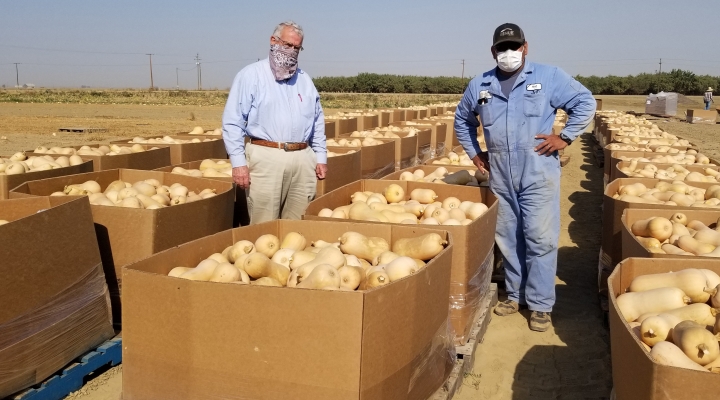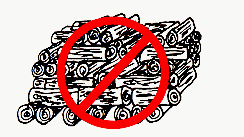By Andy Walker
Members of the Special Committee on Climate Change received a briefing recently on the California Healthy Soils program.
Dr. Amrith Gunasekara, Dr. Geetika Joshi and Rachael O’Brien from the California Department of Food and Agriculture appeared via videoconference. O’Brien, who is the Deputy Secretary of Legislative Affairs, said California has been able to stay under its greenhouse gas emissions target so far this year, adding her department works with hundreds of farmers to promote what she called “climate-smart agricultural practices” that support their land stewardship and sustainability.
O’Brien explained the Healthy Soils Initiative is funded through the proceeds of a cap and trade program administered by the state. Dr. Amrith Gunasekara, who is the manager of the Office of Environmental Farming and Innovation program, noted the state has 69,400 farms and over 400 commodities. He said the state began to direct significant resources towards soil health following severe droughts in 2014 and 2015.
Dr. Geetika Joshi, who oversees the implementation of the Healthy Soils Program, explained direct financial assistance of up to $100,000 is available to producers to implement practices proven to sequester soil carbon, reduce greenhouse gas emissions and build soil health. There is also funding for demonstration projects that is available to farmers and ranchers in collaboration with universities, local resource conservation districts and nonprofit organizations. The funding can be up to $250,000 depending on the size and scope of the project. She said matching funds are not required from the producer although that does sometimes happen.
Since 2017, the program has have funded 576 incentives projects totaling $34 million directly to farmers and ranchers and 67 demonstration projects with a total value of $8.2 million. Dr. Joshi explained “On an annual basis, there are over 100,000 tonnes of GHG reductions from incentives projects and about 9,000 from the demonstration projects. That is equal or similar to a little over 24,000 cars being taken off the roads for a year or if we were to think of in terms of carbon sequestration and forested lands, almost 150,000 acres of forested lands in a year.”
“Demonstration projects are really key for farmer-to-farmer education,” Dr. Joshi said. “When we think about long-term adoption of practices, a scientist such as myself or others on our team who are always sitting in our office often don’t make the most compelling reason for a farmer to do something. What really appeals to them is if they see other farmers such as themselves – they’re farmers – doing something − it worked out for them. “
Dr. Gunasekara explained the state’s Healthy Soil Initiative is geared to both organic and conventional producers, saying “it’s really about building the carbon content in the soil to provide multiple benefits.”
“We finally managed to tie soil management practices on farms with real carbon sequestration benefits,” he said. “That was a big momentum shift, I believe, in the state. We’ve shown that it contributes to climate change adaptation by increasing water holding capacity and also those multiple benefits that we highlight, but certainly helps with greenhouse gas mitigation and agricultural sustainability into the future as well. “
Dr. Gunasekara explained the department uses a planning tool nicknamed COMET that was developed by the United States Department of Agriculture that can estimate the greenhouse gas reductions that will likely result from an action on the farm and producers are encouraged to follow the practice for at least three years.
He noted the department is only allowed to use five per cent of the funds for administrative costs, adding the COVID-19 pandemic has resulted in less on farm visits. He told Education Minister Brad Trivers his department would be more than willing to share the details of the program with PEI.
He told Summerside-South Drive MLA Steve Howard the program did not get any funding from the cap and trade fund this year since revenues were down due to the pandemic. That forced them to use other funding sources like bonds. Dr. Geetika Joshi added all of the programs are funded for three years so projects already in progress were not impacted.
In terms of carbon content, Dr. Gunasekara noted California soils range from 0.1% to 4% and he said the objective of the program is to build up to the 4-5 per cent range over time. He added ” We don’t have any set goals. There is policy discussions happening on what might be a good level, but we have over 2,500 different soils in this state and I think one of those images I really want to highlight is we’re a very big land mass and very diverse soil systems.”
In response to a question from Charlottetown-Brighton MLA Ole Hammarlund, Dr. Gunasekara said the key to an effective non-till system is specialized equipment. He added “We don’t advocate for any pesticides to be used when they’re doing our practices. That’s certainly a grower decision but our system, our incentive says okay, you follow our recipe and the recipe is something defined by the USDA on here’s what you can and can’t do.”
Dr. Joshi said non till is popular, especially for orchard and vineyard type of operations, where they have rows of land in between rows of trees or grapevines, where they have the ability to plant strips of grass or minimize tillage in those strips of land while the tree crop or the vine crop is growing on the side.
Committee Chair Lynne Lund said she would like to see PEI explore the possibility of using the COMET tool or something similar on PEI. Dr. Gunasekara offered to provide the committee with a list of “lessons learned” and successes since the start of the program five years ago. Lund said there could be opportunities for the new Climate Change school at UPEI to work on demonstration projects.
The committee chair asked if the program has examined the impacts nitrogen fertilizer or chemical fertilizers have to soil organic carbon or soil organic matter. Dr. Joshi said nitrogen combined with irrigation can sometimes create waterlogged conditions in the soil and generate nitrous oxide– a gas hundreds of times more potent than carbon monoxide.
“If there is a lot of nitrogen, it can kick start a lot of biological activity that, especially in the short-term, means that the organisms are eating a lot more and they’re metabolizing everything faster, which means that some of the stored carbon can become part of the food that they start metabolizing,” she said. ” It is certainly a very delicate balance of carbon and nitrogen and how to balance it in such a way that we could get a net carbon sequestration rather than increased carbon metabolism.”
Following the hearing, the committee decided to asked the presenters from California for the carbon abatement costs associated with each of the practices in their healthy soil program.
Link to article on PEICanada.com (no cost subscription required)









